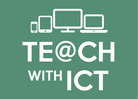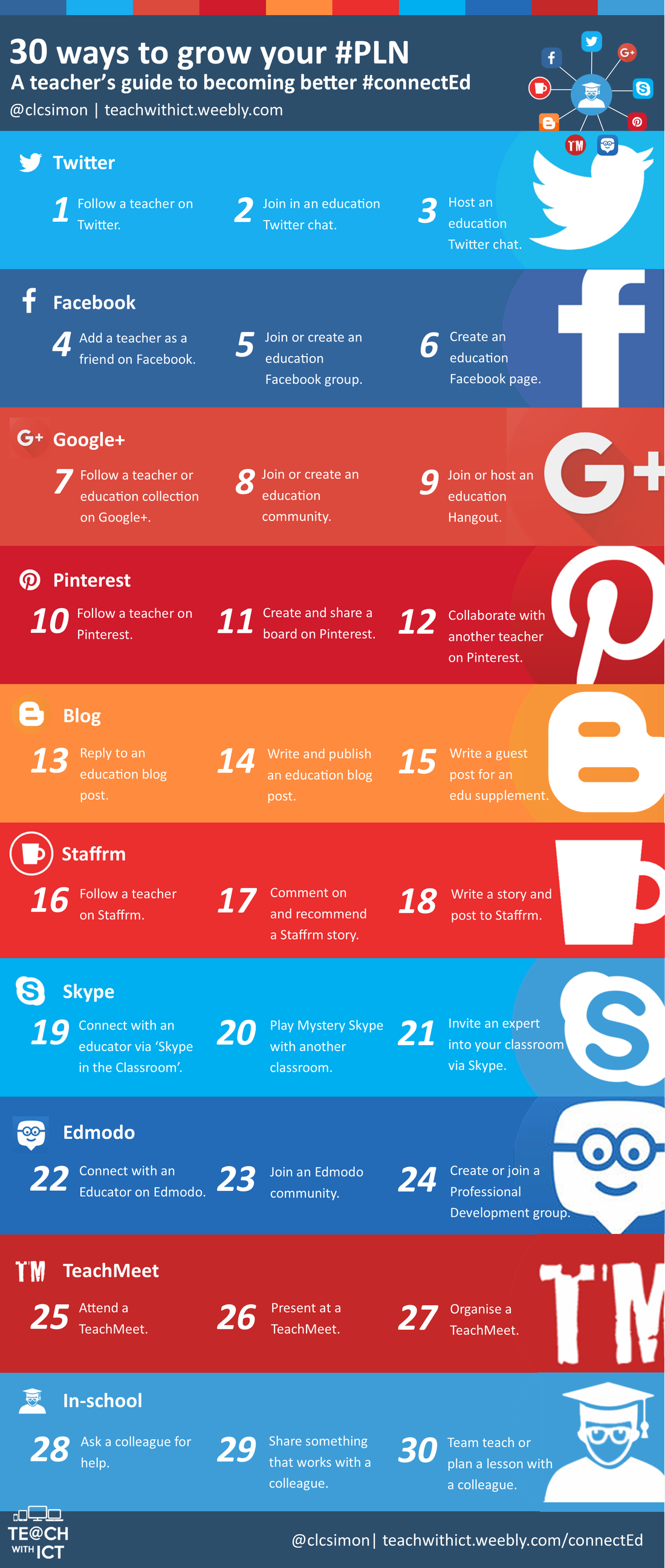|
As teachers, we all want to make a positive impact on the students that we teach. That is why we are always striving to improve our practice by seeking out new ideas/methodologies, heavily investing in classroom technology and constantly updating our teaching resources. One way I have found to keep my teaching ‘alive’ and ‘fresh’ is to connect with other educators and grow my PLN (Personal/Professional Learning Network). Becoming a better connected educator is becoming more & more easier - especially if we leverage the power of Social Media. However, whilst It's impossible to ignore the potential benefits of using social tools such as Twitter, Facebook and Pinterest to connect with like minded professionals and to share best practice / resources, we should not ignore those possible connections closer to home, whether that be collaborating with a colleague or attending a Teach Meet. So, what does it actually mean to be a connected educator and how does one become ‘connected’? What does it mean to be a connected educator?
“My PLN keeps me grounded, learning, challenged, supported, & stretches my thinking. I don't get that from peers.” - Julie Szaj (@shyj)
“My PLN have helped me massively in understanding new topics, adapt to curriculum changes and given me confidence to deliver” - Dominic Kennerley (@dkennerley)
What are the benefits of being a connected educator?
“My PLN is the connection to my past and the door to my future. Teaching is my passion and my PLN matches that passion.” - Etta Zasloff (@etta_zasloff) Introducing 30 ways to grow your #PLNClick on a link below to find out more:
1. Follow a teacher on Twitter. 2. Join in an education Twitter chat. 3. Host an education Twitter chat. 4. Add a teacher as a friend on Facebook. 5. Join or create an education Facebook group. 6. Create an education Facebook page. 7. Follow a teacher or education collection on Google+. 8. Join or create an education community. 9. Join or host an education Hangout. 10. Follow a teacher on Pinterest. 11. Create and share a board on Pinterest. 12. Collaborate with another teacher on Pinterest. 13. Reply to an education blog post. 14. Write and publish an education blog post. 15. Write a guest post for an education supplement. 16. Follow a teacher on Staffrm. 17. Comment on and recommend a Staffrm story. 18. Write a story and post to Staffrm. 19. Connect with an educator via Skype in the Classroom. 20. Play Mystery Skype with another classroom. 21. Invite an expert into your classroom via Skype. 22. Connect with an Educator on Edmodo. 23. Join an Edmodo community. 24. Create or join a Professional Development group. 25. Attend a TeachMeet. 26. Present at a TeachMeet. 27. Organise a TeachMeet. 28. Ask a colleague for help. 29. Share something that works with a colleague. 30. Team teach or plan a lesson with a colleague. Covering your backside - 10 tips for teachers when using Social Media |
Author#EdTech Consultant ArchivesCategories |
Search by typing & pressing enter


 RSS Feed
RSS Feed
